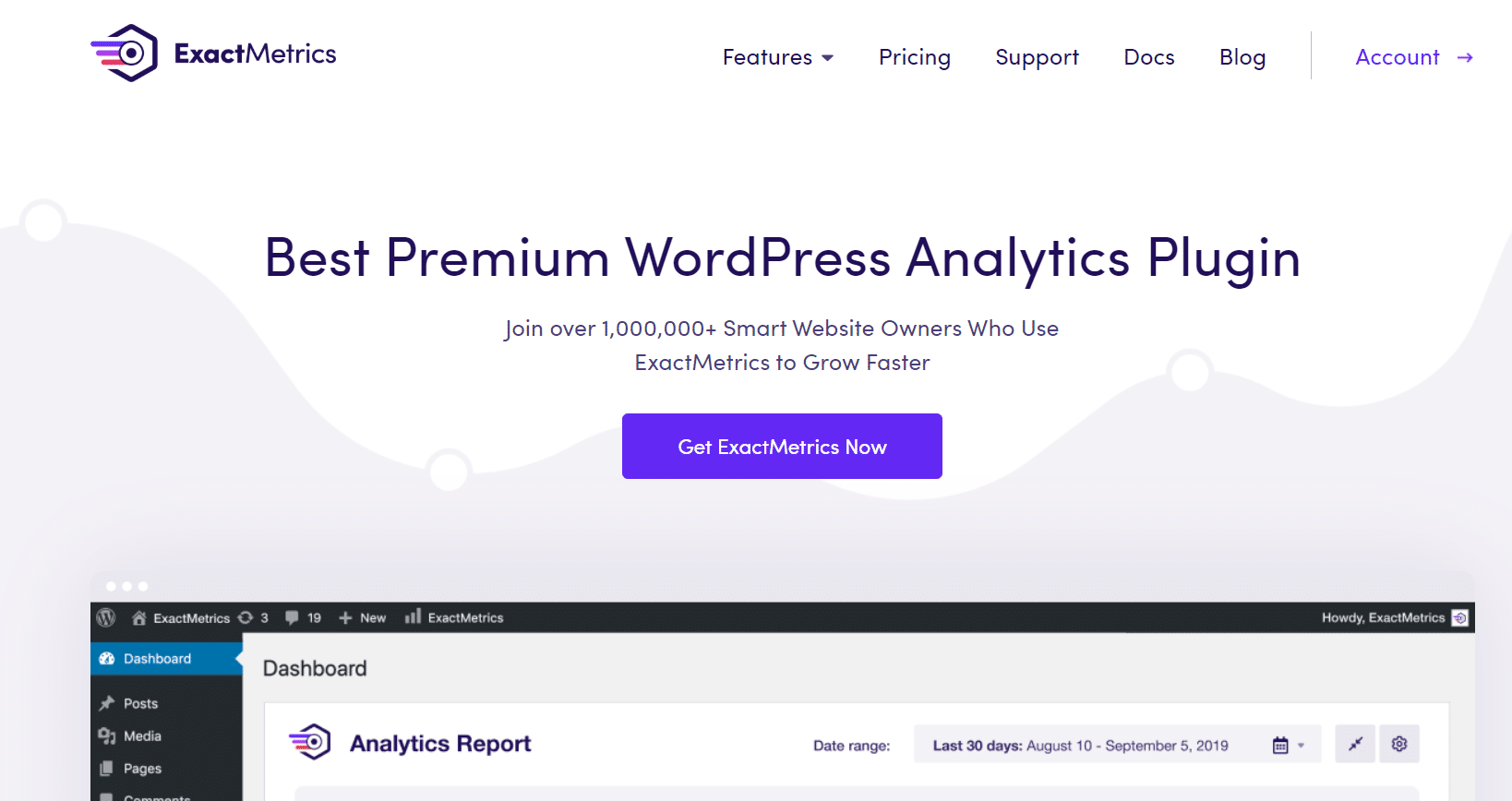Do you need to add a new website to Google Analytics and you’re wondering what the steps are to set it up properly?
Google Analytics is a powerful tool that you can use to understand how your visitors are behaving on your website. You can get insights about where your traffic comes from, which pages are most popular, how much revenue you’re making, and lots more.
In this article, we’ll show you how to add a new website to Google Analytics. We’ll also explain how you can add the tracking code to your WordPress site without any coding.
So, let’s start the tutorial…
How to Add a New Website to Google Analytics
It can be intimidating to add a new website to Google Analytics if you’re new to the tool. So, follow these few simple steps to set up your new property in Google Analytics and connect it to WordPress.
- Add a New Google Analytics Property
- Connect Google Analytics to WordPressConnect Google Analytics to WordPress
Add a New Google Analytics Property
You can add up to 100 Google Analytics properties to a single account. So, you don’t have to switch between accounts to view different sites if they all belong together under the same account.
For instance, if you have one or multiple subdomains (news.youriste.com, shop.yoursite.com), you can create a separate property for each one under the same account. You can also create properties for a mobile app and a website under the same account or even track them together within the same property.
Step 1: Log in to Google Analytics Account
The first step is to log in to your Google Analytics account. You can do that by going to the Google Analytics website.
Once you’re signed into an account, if you create a property, the property will be located in that account. So, make sure you’re signed into the account you want your site or app to be under.
If you don’t have a Google Analytics account, then go ahead and create a new one.
Step 2: Select a Property and Go to Admin Section
Note: Skip this step if you’ve just created your account. Google will take you straight to creating a property.
Once you’re logged in, the next step is to add a new website to Google Analytics.
First, select a property in the account that you want to add the new website to.
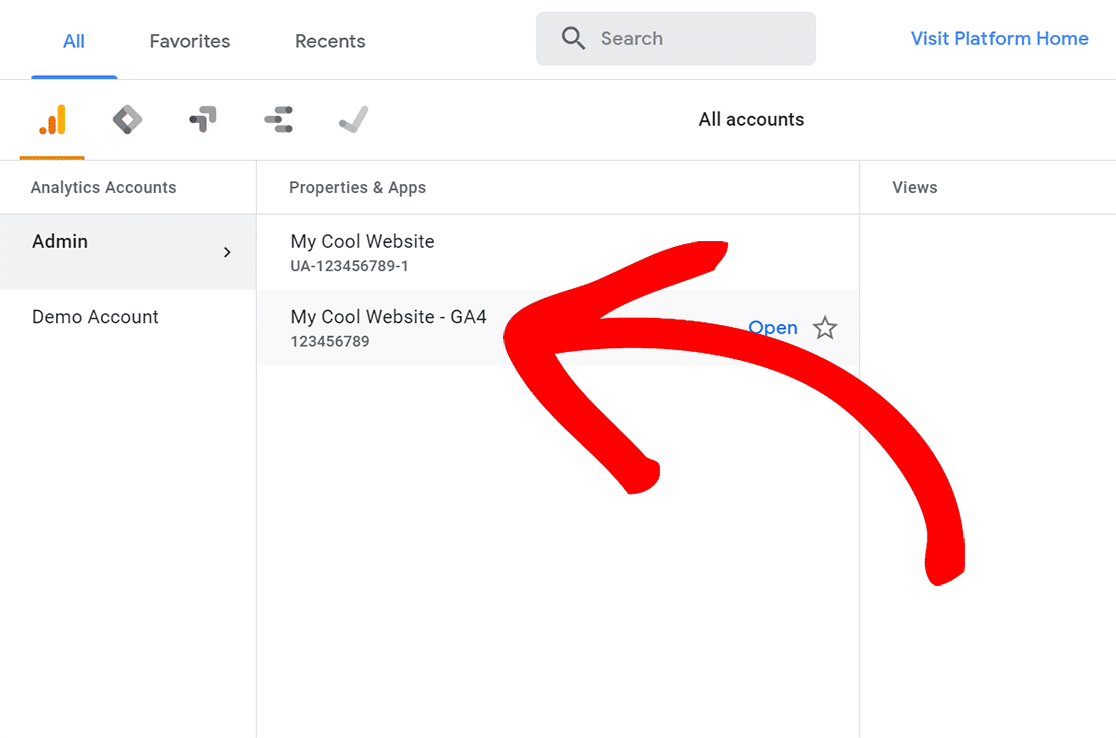
Then, go to the Admin section, which is located in the bottom left corner and has a gear icon.
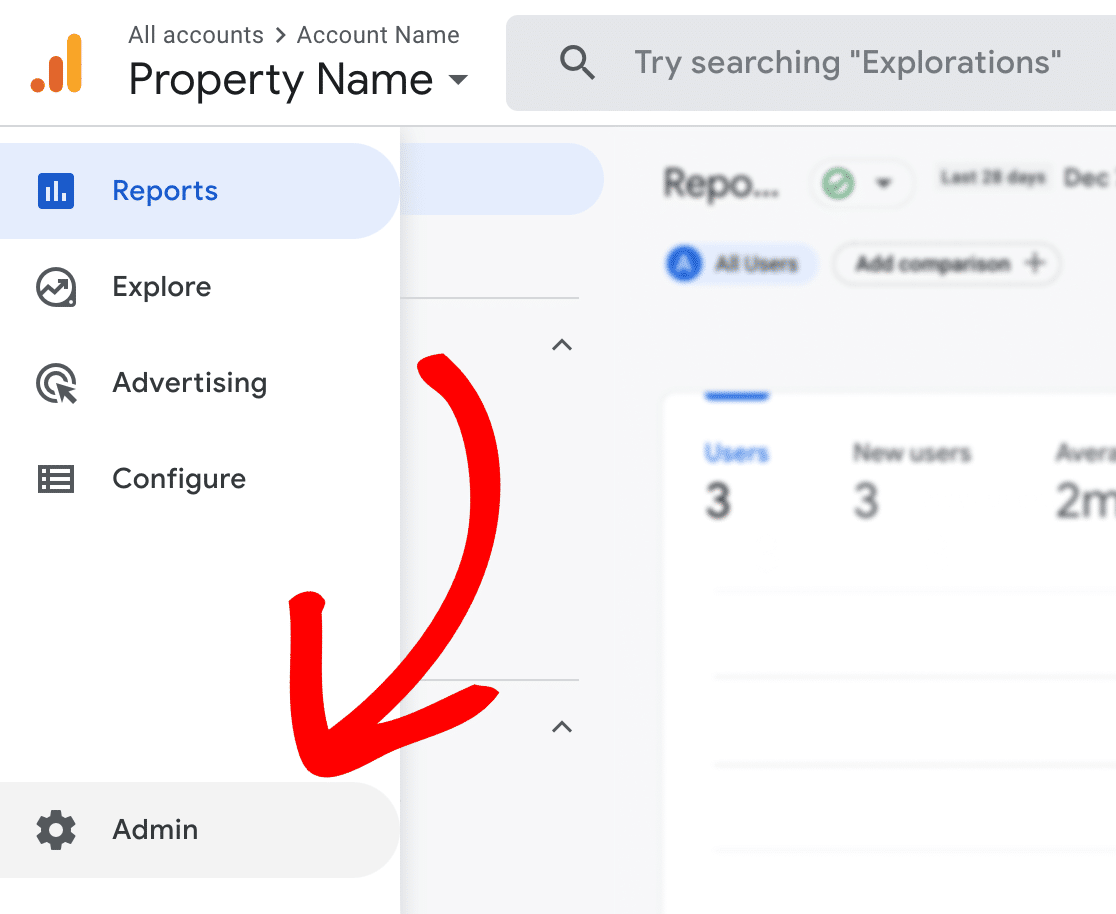
Step 3: Create a Property in Google Analytics
Now, under the Property column, click on the blue button called + Create Property.
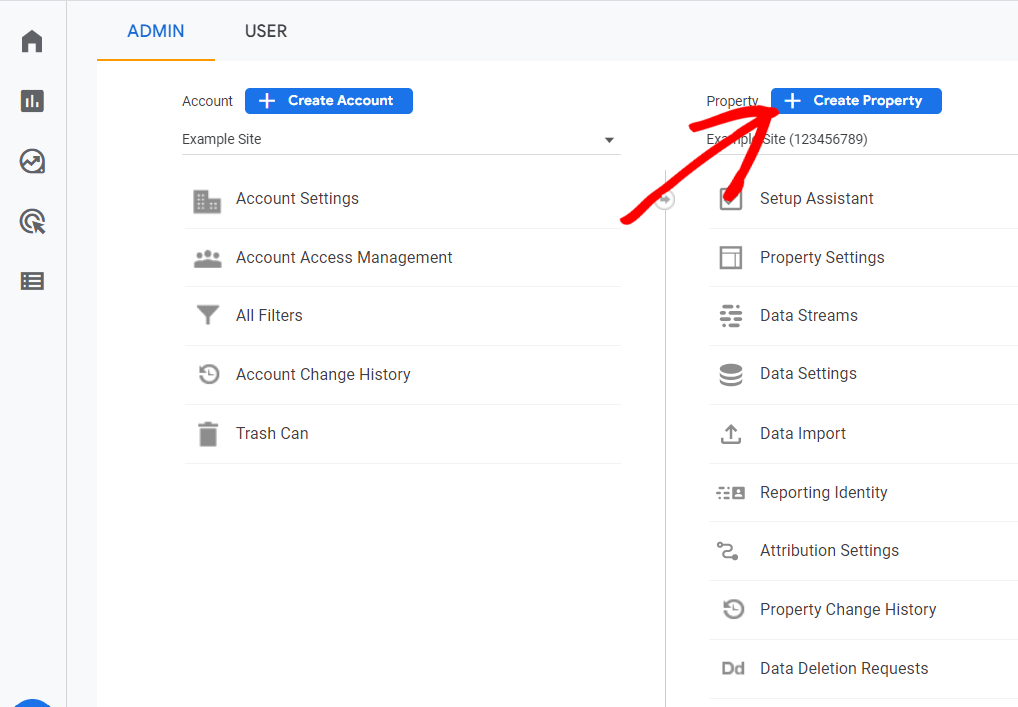
Google Analytics will then ask you to enter a property name, select a reporting time zone, and choose a currency.
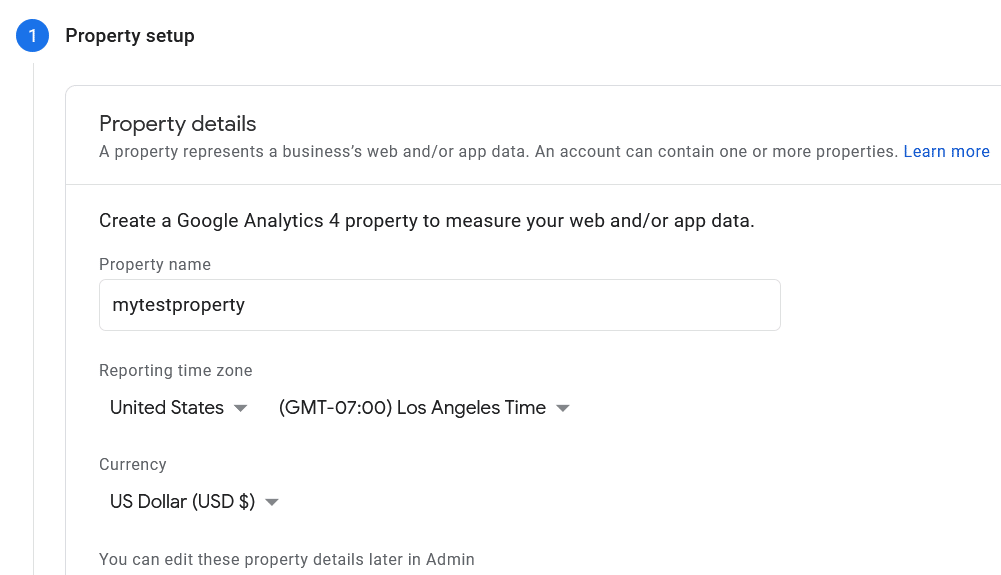
On the next screen, you’ll have to enter your business information. First, select an Industry Category for your website.
Then, choose a business size and select how you intend to use Google Analytics with your business. You can select more than one option to explain how you’ll be using Analytics.
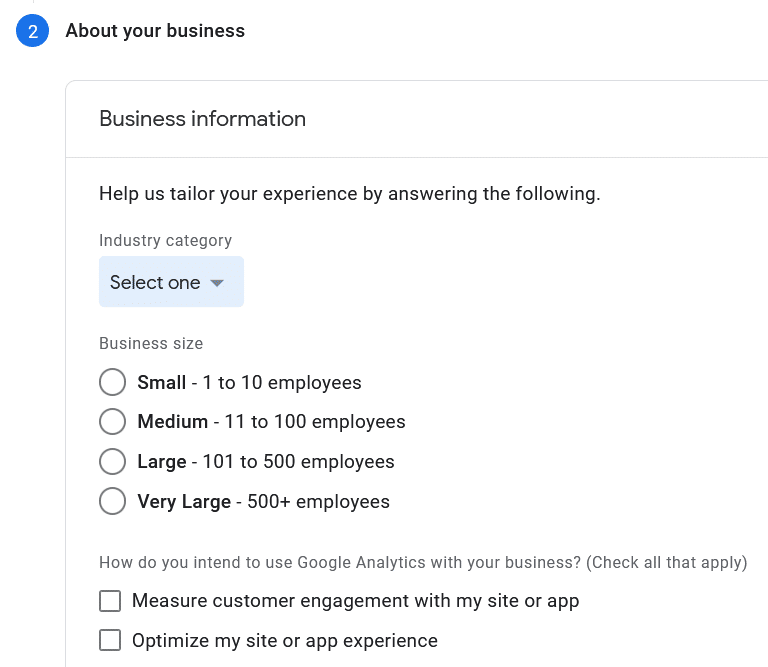
Now, when you click Create, you may see a Terms of Service popup. Click I Accept.
Next, you’ll be instructed to create your data stream. This is just where you tell Google what property type you’re setting up, whether it’s web or app. We’ll go over the Web setup. So, choose Web:
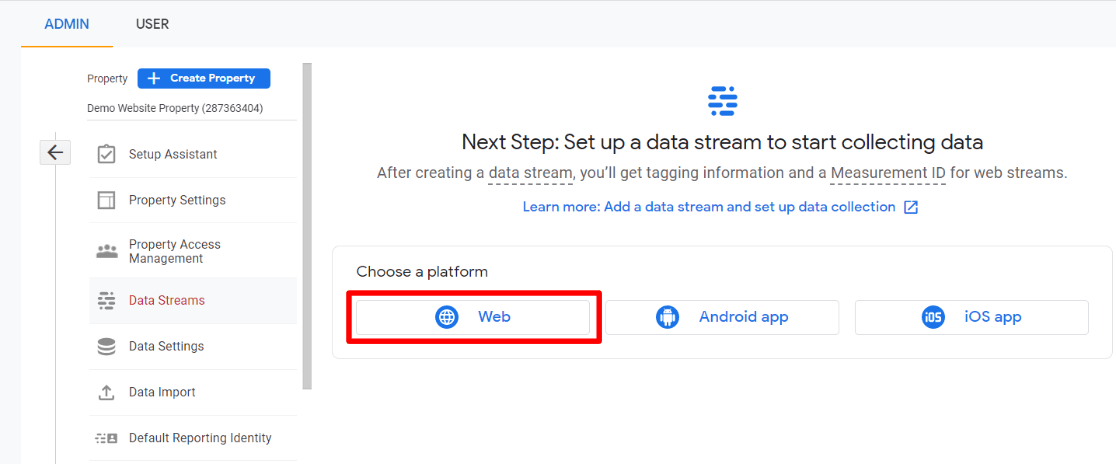
Fill in your URL, give the stream a name, and click Create stream.
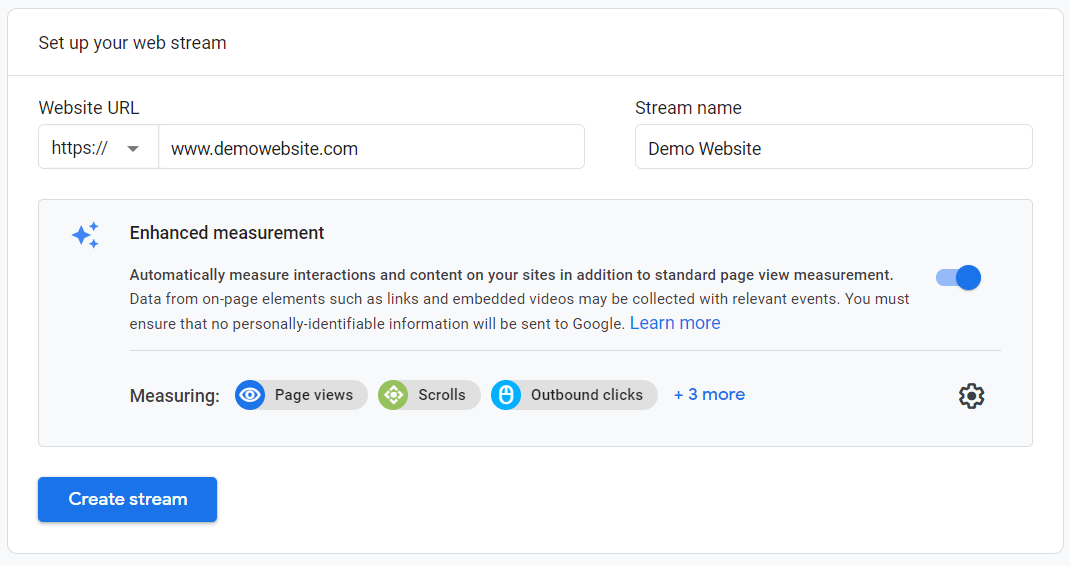
That’s it! Your property is created.
Now, you still need to install the tracking code on your website.
However, inserting the tracking code requires coding. And if you don’t have any knowledge about how to code, then it’s better not to mess with it or you may risk harming your website.
If you’re on WordPress, you’re in luck! We have the easiest way possible for you to install Google Analytics on your site: ExactMetrics.
Connect Google Analytics to WordPress
Step 1: Install ExactMetrics
ExactMetrics is the best premium WordPress Analytics plugin for WordPress. Using ExactMetrics, you don’t have to edit any code at all to install Google Analytics.
To set up Google Analytics in WordPress, the first thing you’ll need to do is install the ExactMetrics plugin.
Once you’ve purchased ExactMetrics, you can download the plugin from your account area. Just log in and go to the Downloads tab. Then, click on Download ExactMetrics to get the ZIP file. Alternatively, you can grab the lite version to try for free.
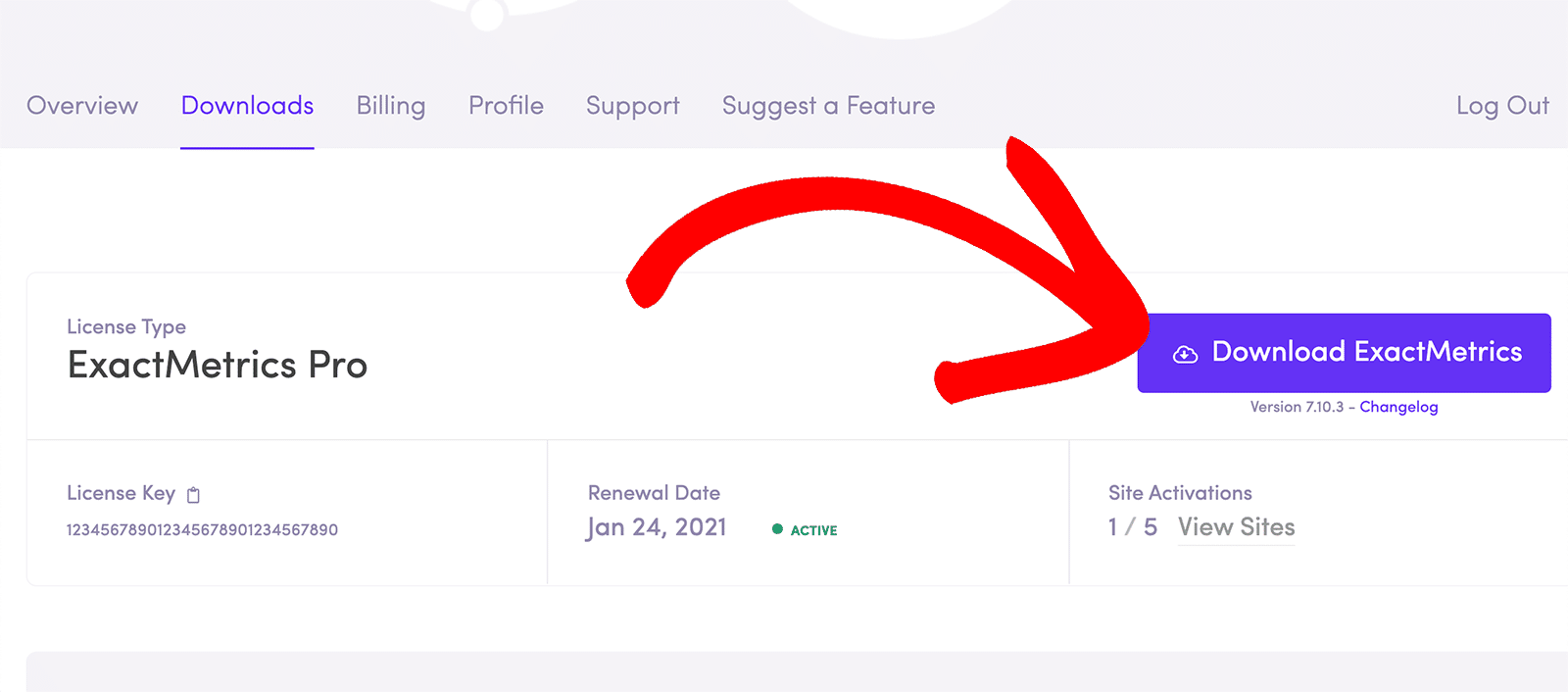
Now, head over to your WordPress website and go to Plugins. Click Add New at the top, and you’ll see an option to Upload Plugin.
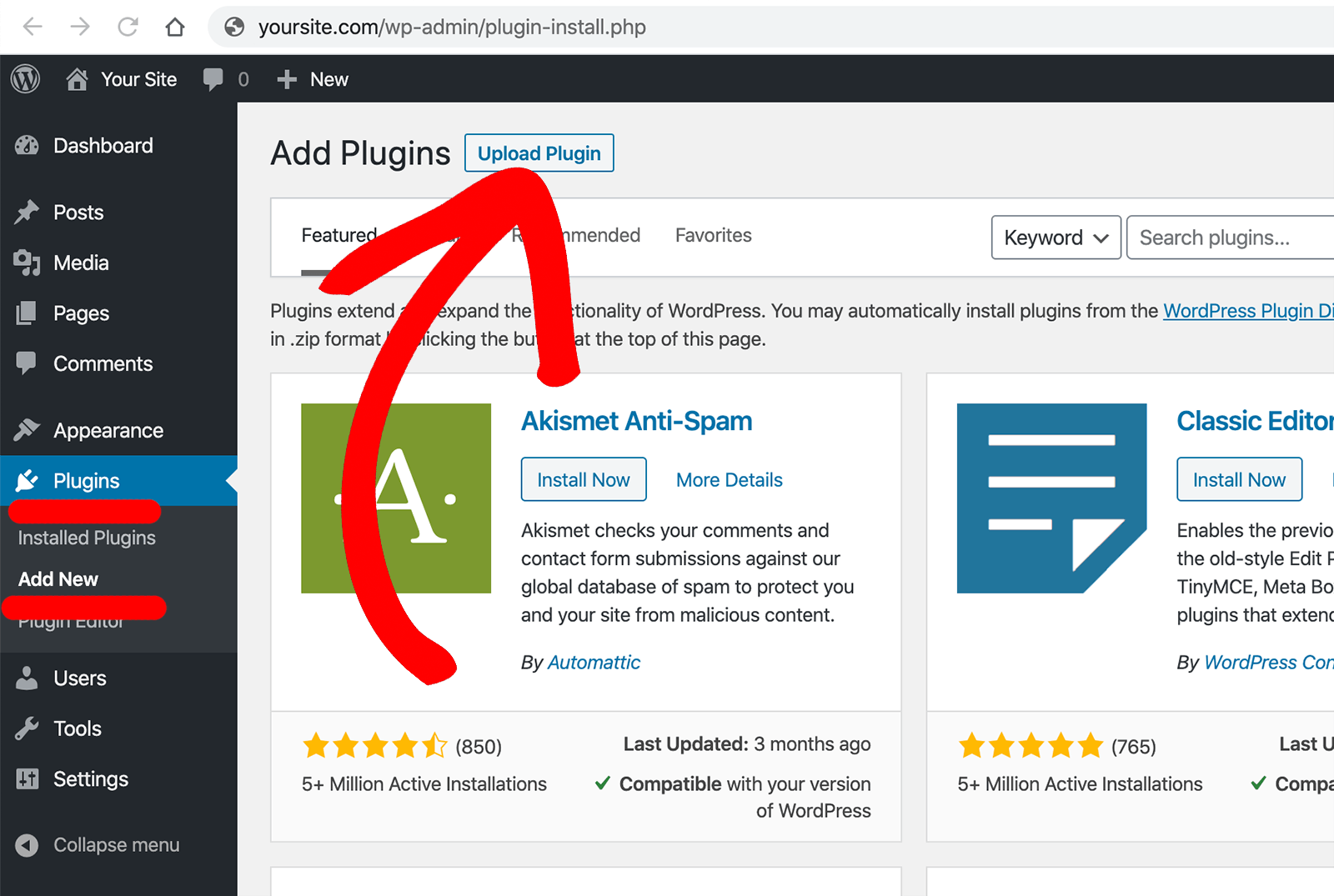
Next, click on Choose File and navigate to where you saved the ExactMetrics ZIP file. Upload the ZIP file and click Install Now.
Once the installation is complete, click on Activate Plugin to use ExactMetrics.
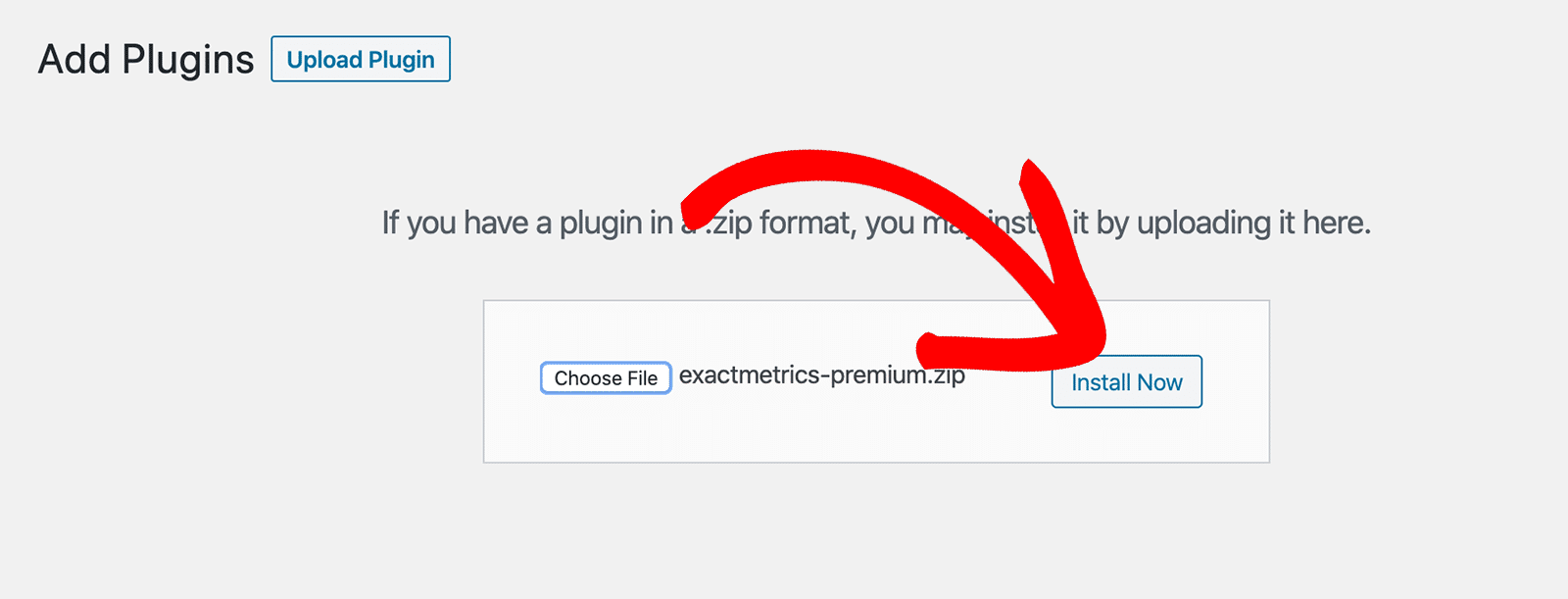
You should now see ExactMetrics in your WordPress options on your left.
Step 2: Connect Google Analytics to ExactMetrics
To add Google Analytics, go to ExactMetrics » Settings.
Here, you’ll see a wizard that will guide you through the setup process. Click on Launch Setup Wizard.
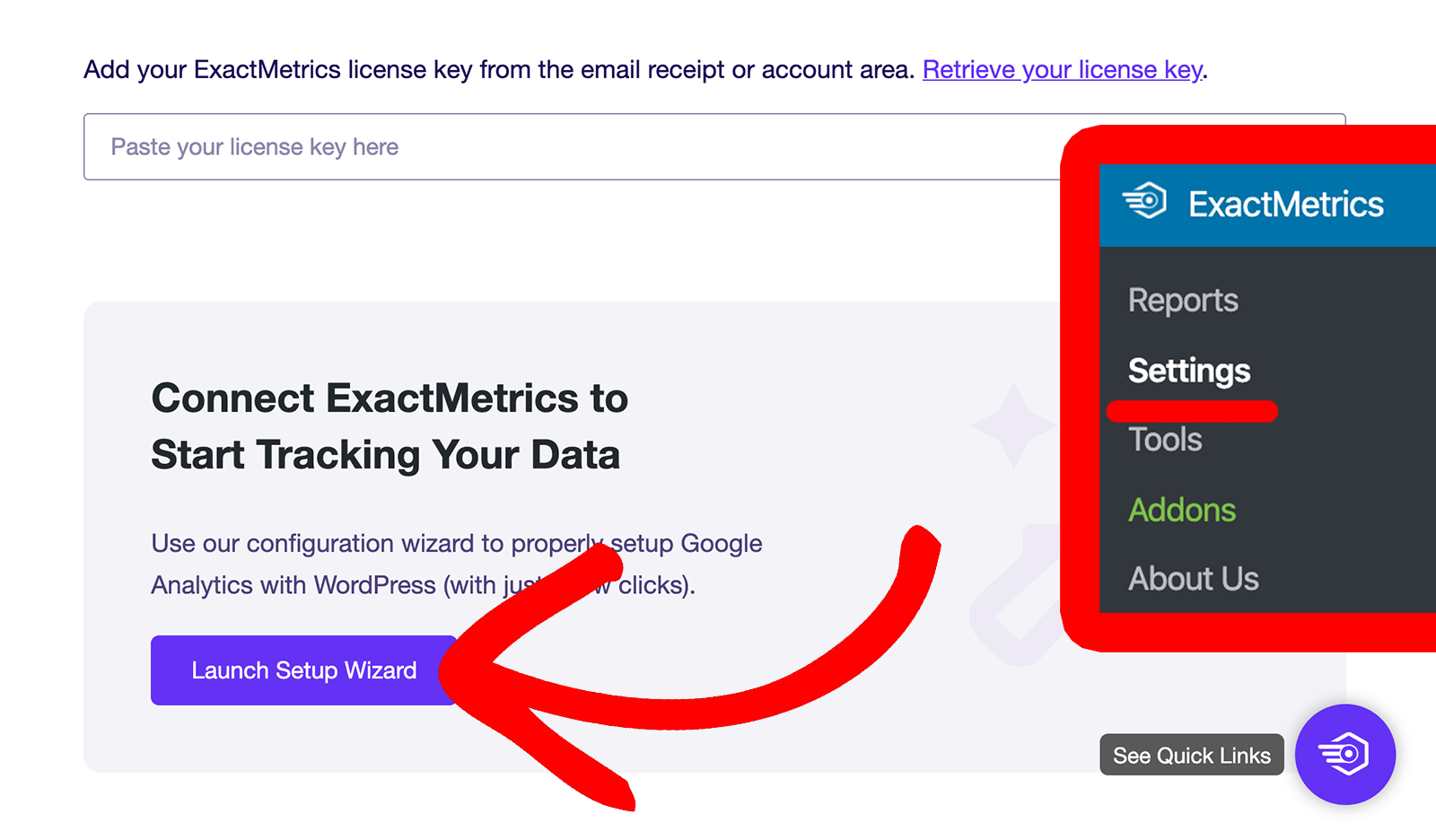
The setup wizard will ask you about the type of website you want to connect. You can choose from 3 options: Business website, Publisher (Blog), or eCommerce.
Select your website type and click Save and Continue.
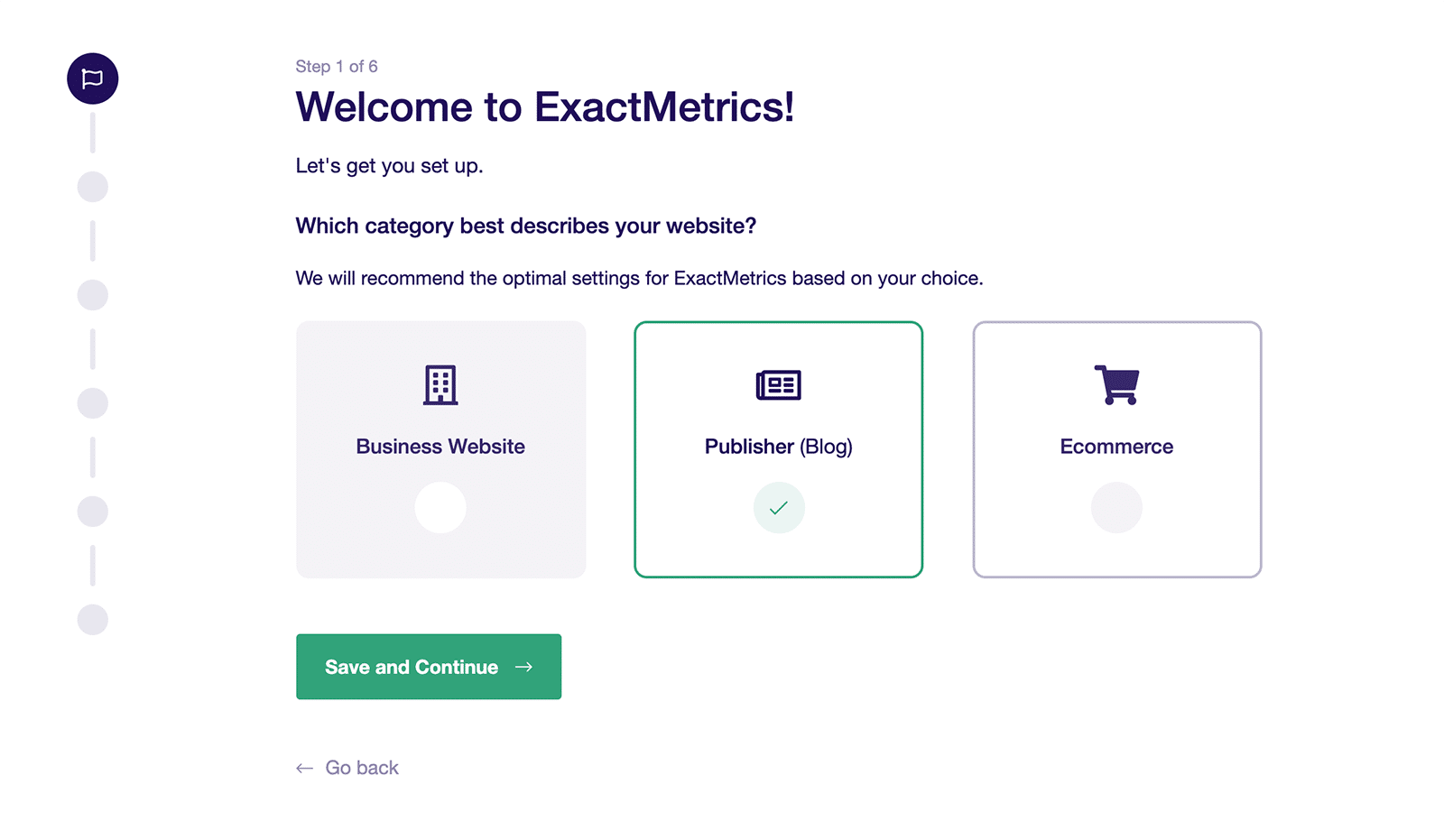
In the next step, you’ll have to connect your Google account. Select the account that you used earlier to add a property to Google Analytics.
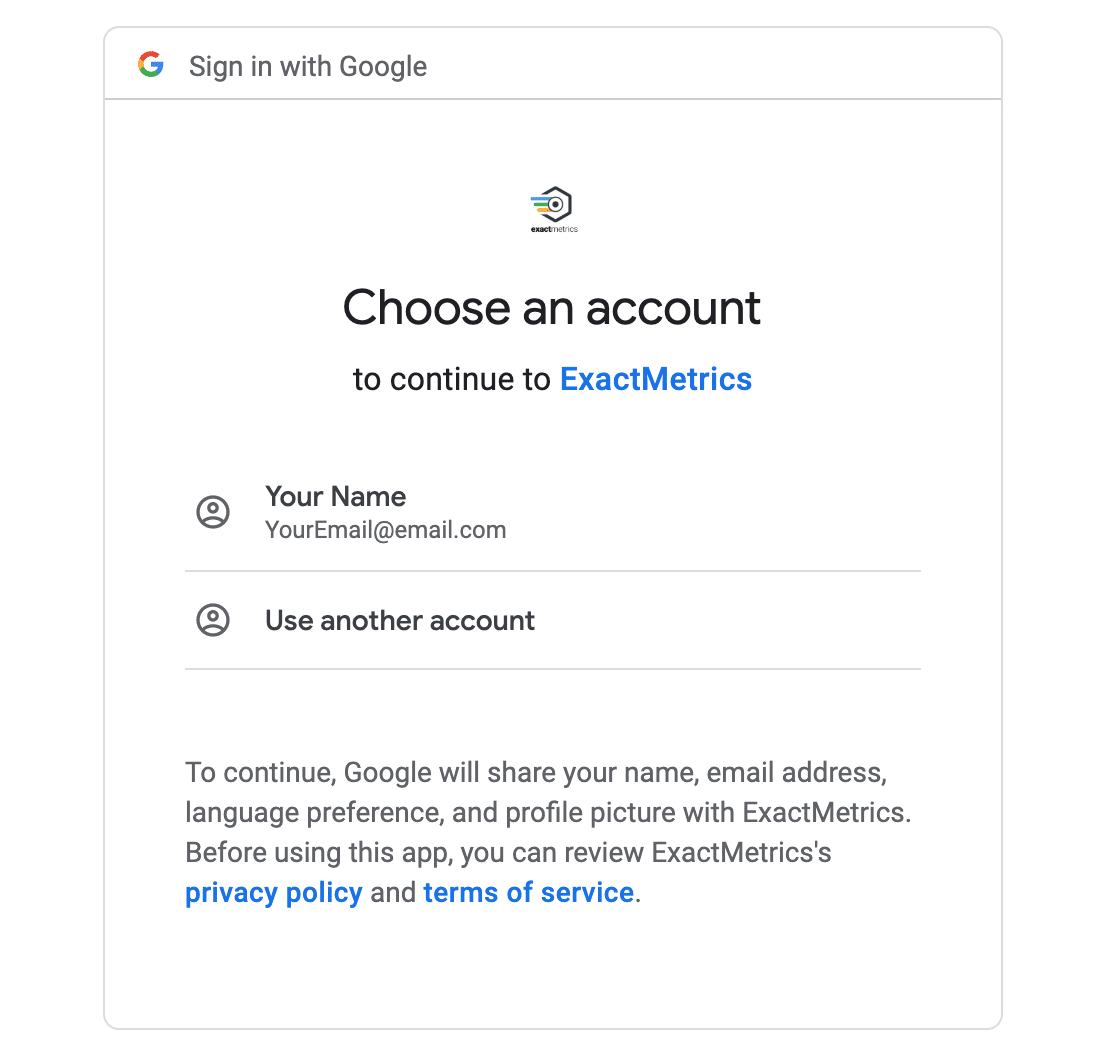
Next, you’ll have to grant permissions for the plugin to properly set up tracking.
Make sure to select all the options. Then, click Allow.
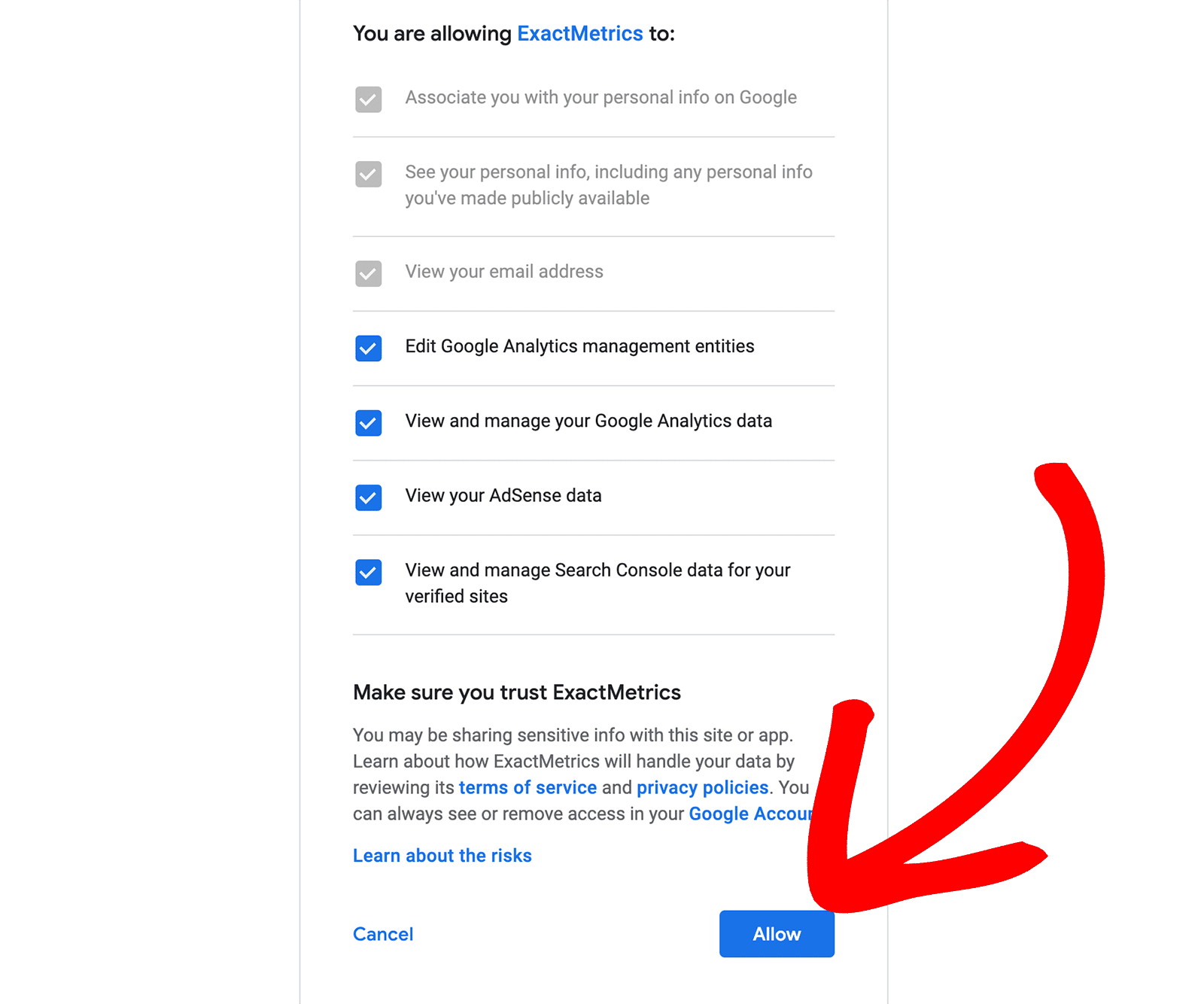
Once you’ve connected your Google account, the last step is to select the property you want to track. Here, choose the property name that you created previously.
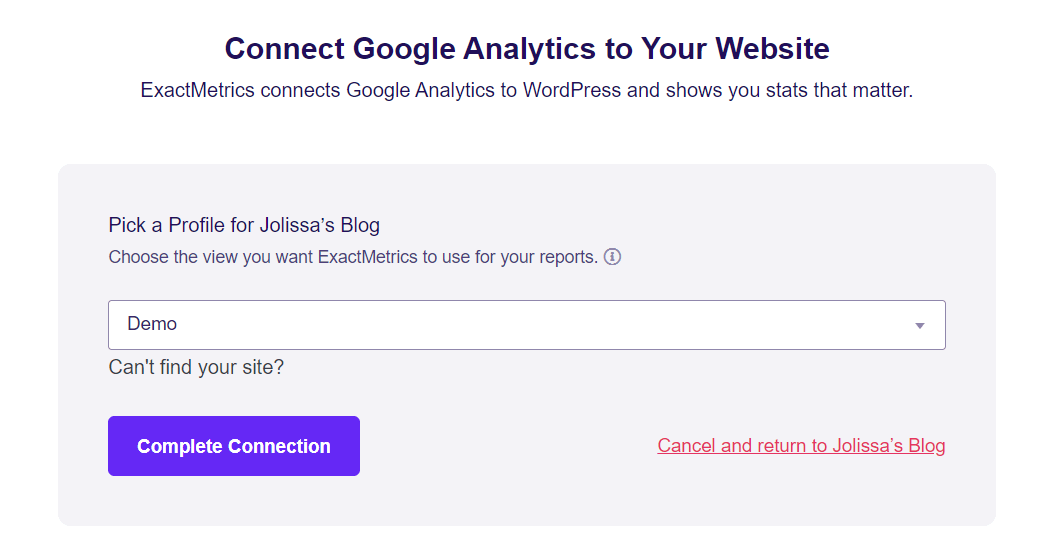
Now, click Complete Connection.
ExactMetrics will show you some recommended settings. For instance, you can select the file download tracking extensions, set up affiliate link tracking, and choose which user roles can see the reports.
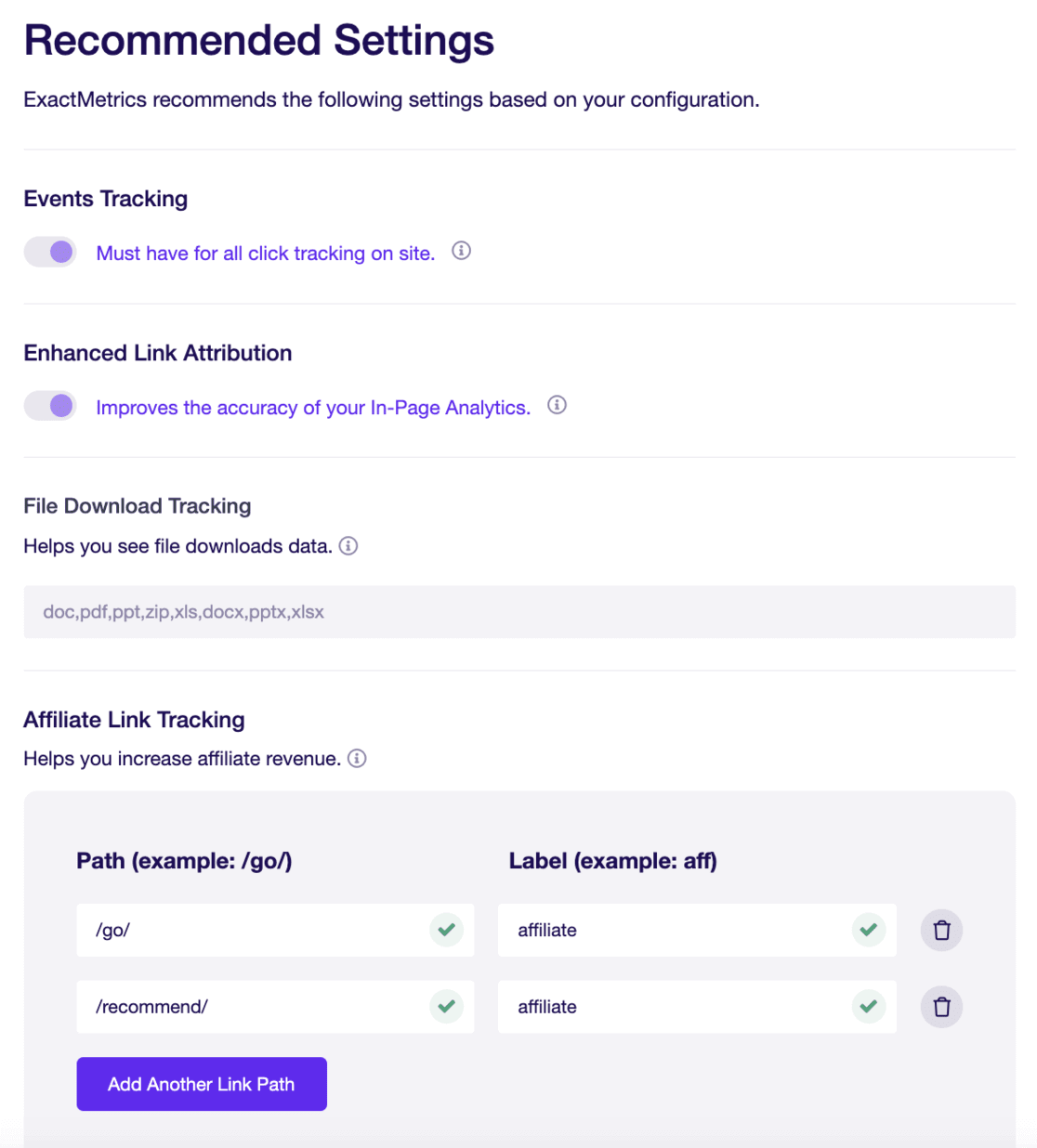
As you scroll down, you’ll see more settings.
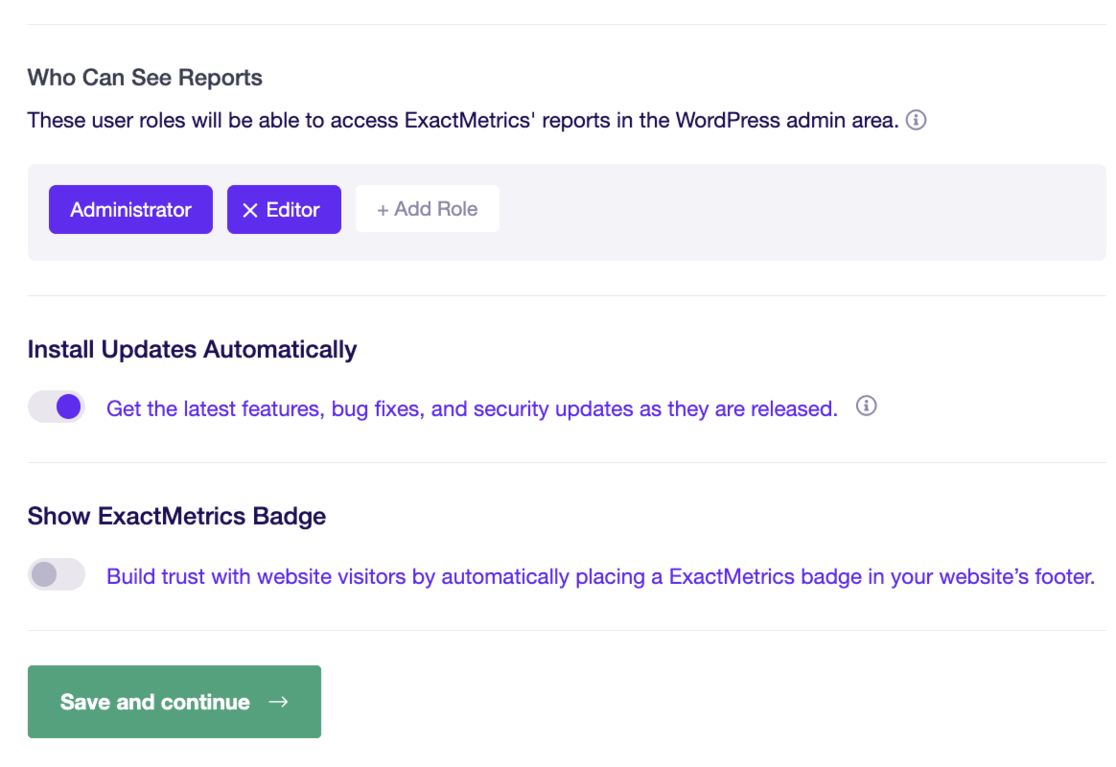
- Access to ExactMetrics Reports: You can choose who can see the ExactMetrics reports.
- Automatic Plugin Updates: You can enable or disable the option to install updates automatically.
- Show ExactMetrics Badge: Choose whether or not you want to show an ExactMetrics badge in your website’s footer. You’ll be able to access a few options for how this looks later.
Review and configure these recommended settings, and then click the Save and continue button at the end.
On the next screen, you’ll see options for even more tracking settings, addons, and helpful plugins.
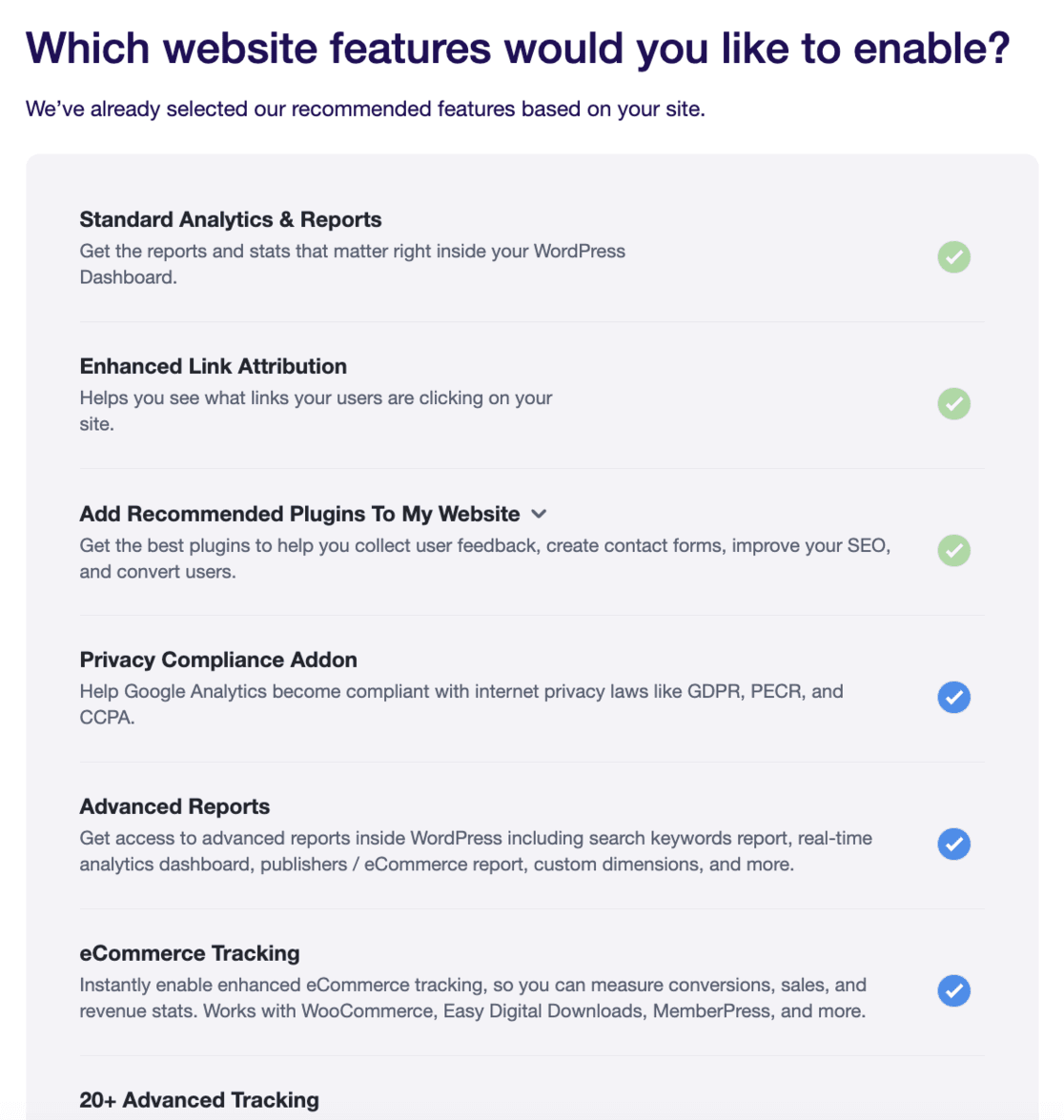
The first ones are:
- Standard Analytics & Reports: The standard ExactMetrics reports you’ll get in your WordPress dashboard.
- Enhanced Link Attribution: This can help you see where users are clicking on your site.
- Privacy Compliance Addon: Helps Google Analytics become compliant for GDPR, CCPA, and more.
- Advanced Reports: Get access to advanced reports inside ExactMetrics, such as search keywords, real-time reports, publishers, and eCommerce reports, and more.
- eCommerce Tracking: Instantly enable eCommerce tracking.
- 20+ Advanced Tracking: Even more advanced tracking, such as author tracking, form conversion tracking, scroll tracking, and more.
- Advanced Growth Tools: Get access to our campaign URL builder, popular posts addon, and A/B testing integration.
- Media Tracking: Track how your users interact with videos on your website with the ExactMetrics Media addon.
After that, you’ll see a new screen with this message: ‘Awesome! Tracking and Analytics are All Setup!’:
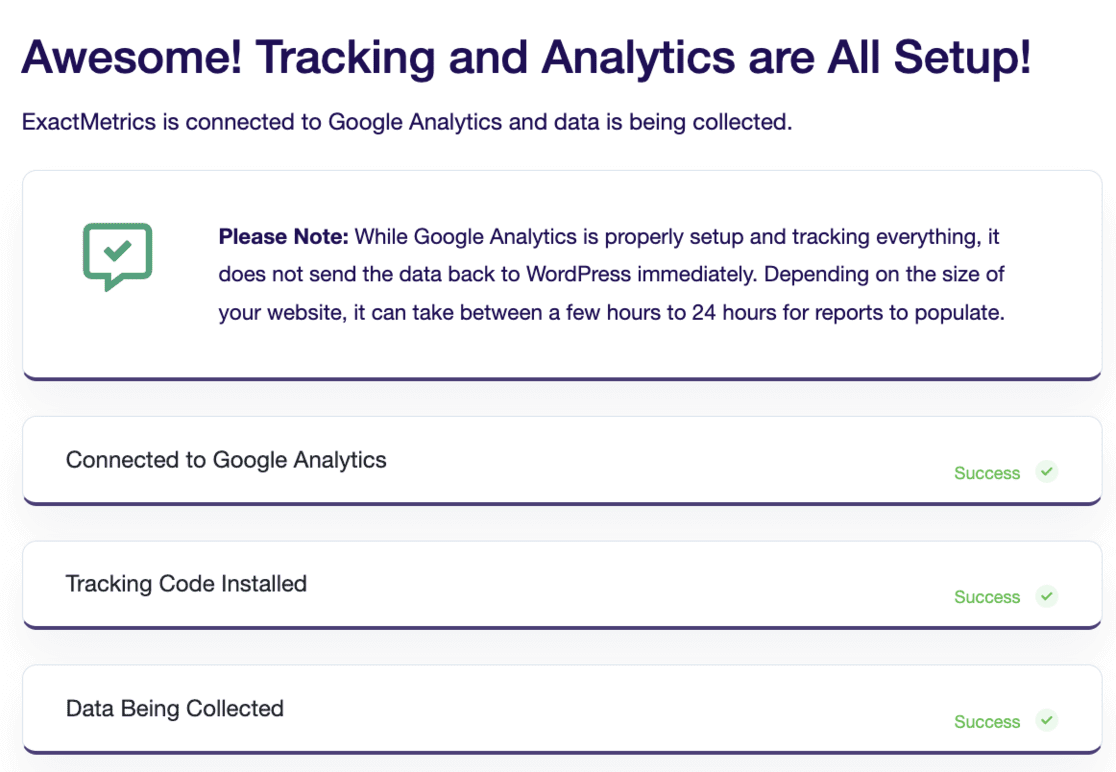
This means the setup process is complete, and you’ve successfully installed Google Analytics on your WordPress site.
This screen also notifies you about when you can start seeing your website reports. Depending on the size of your website, it can take between a few hours to 24 hours.
Don’t forget to click on the Finish Setup & Exit Wizard button.
And that’s it!
You’ve successfully added Google Analytics to your new website without any coding.
Now that you know how to create a property in Google Analytics and add a tracking code to your WordPress website, here are a few more articles we think you might like:
- How to Track Link Clicks in Google Analytics and WordPress
- 30 Epic Marketing Hacks for Explosive Traffic Growth
Not using ExactMetrics yet? Get started today!
And don’t forget to follow us on X and Facebook for the latest tutorials on Google Analytics.


